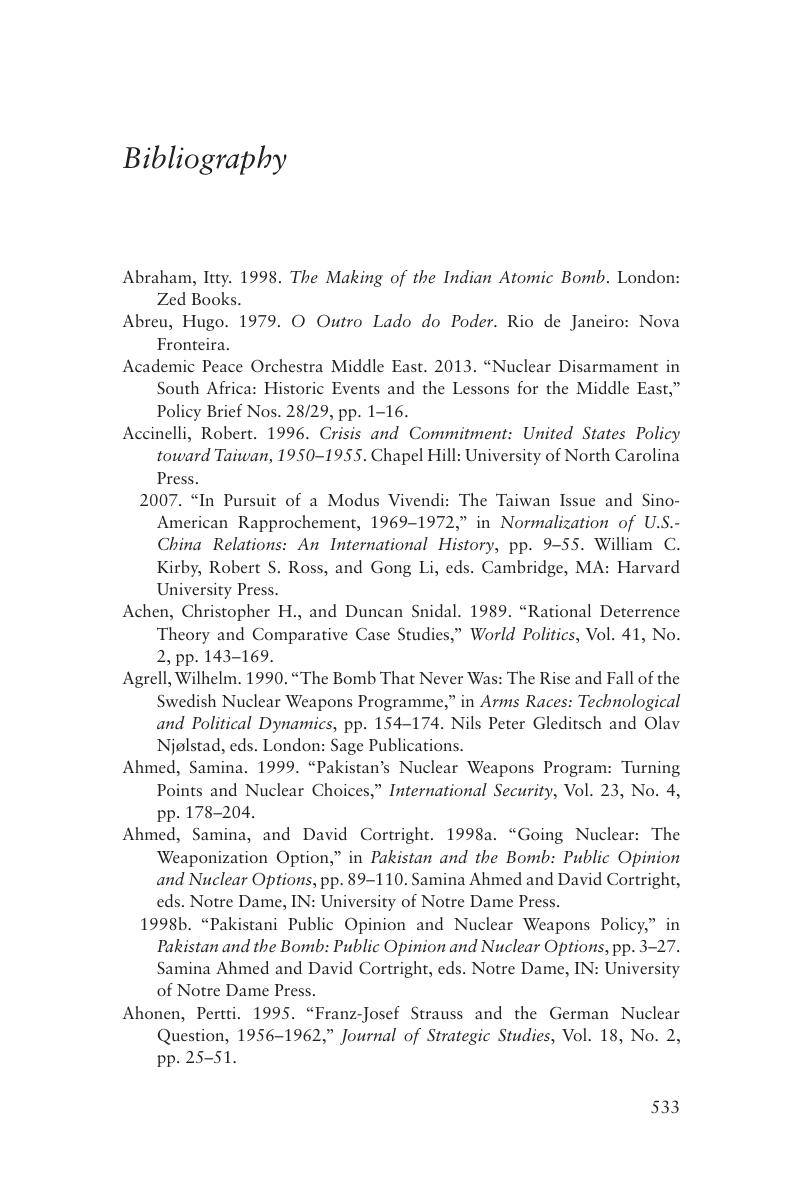Book contents
- Nuclear Politics
- Cambridge Studies in International Relations: 142
- Nuclear Politics
- Copyright page
- Dedication
- Dedication
- Contents
- Figures and Tables
- Preface
- Abbreviations and Acronyms
- 1 Introduction
- 2 A Strategic Theory of Nuclear Proliferation
- 3 The Historical Patterns of Nuclear Proliferation
- 4 Adversaries and Proliferation
- 5 Loose Allies and Proliferation
- 6 Close Allies and Proliferation
- 7 Conclusion
- Appendix I Coding Rules
- Appendix II Other Cases of Nuclear Development
- Appendix III Puzzling Cases of No Nuclear Development
- Appendix IV Formal Theory
- Bibliography
- Index
- Cambridge Studies in International Relations
- References
Bibliography
Published online by Cambridge University Press: 20 January 2017
- Nuclear Politics
- Cambridge Studies in International Relations: 142
- Nuclear Politics
- Copyright page
- Dedication
- Dedication
- Contents
- Figures and Tables
- Preface
- Abbreviations and Acronyms
- 1 Introduction
- 2 A Strategic Theory of Nuclear Proliferation
- 3 The Historical Patterns of Nuclear Proliferation
- 4 Adversaries and Proliferation
- 5 Loose Allies and Proliferation
- 6 Close Allies and Proliferation
- 7 Conclusion
- Appendix I Coding Rules
- Appendix II Other Cases of Nuclear Development
- Appendix III Puzzling Cases of No Nuclear Development
- Appendix IV Formal Theory
- Bibliography
- Index
- Cambridge Studies in International Relations
- References
Summary

- Type
- Chapter
- Information
- Nuclear PoliticsThe Strategic Causes of Proliferation, pp. 533 - 594Publisher: Cambridge University PressPrint publication year: 2016



